Finding it difficult to handle the increased data volumes in your data center or 5G fronthaul network? With the right 40G QSFP+ modules, you can be reassured that your infrastructure can meet the bandwidth requirements that keep rising, sustainably and reliably. These compact optical transceivers provide next-generation Ethernet speeds and improve upon legacy 10G modules, all without requiring a major refit of existing hardware. By understanding the broader 40G QSFP+ universe and making the right selection choices, you can feel confident about the performance of your network today and the future scalability your network will have.

40G QSFP+: Your Network Upgrade “Accelerator”
Think of changing a narrow footbridge into a high-speed metro. The capacity for transporting people or data is then multiplied massively. The 40G QSFP+ module is the equivalent of this in data centers and enterprise networks, and it is enhancing bandwidth and port density while simultaneously reducing power and cost per gigabit.
As organizations progress from previous generations of slower standards to 40G QSFP+ networks, they are unleashing a potent transmission pipeline built for the heavy data flow requirements of today and the near future. This transition is helping organizations take advantage of opportunities to scale and expand service offerings without a complete rebuild of their infrastructures, while simultaneously preparing enterprises for the digital world of tomorrow and its demands.
Key benefits of 40G QSFP+ include:
- Substantially increased bandwidth compared to previous generation modules.
- Increased port density, providing more connections in the same equipment area.
- Improved energy efficiency, resulting in lower operational costs at scale.
- Reduced total cost of ownership through convergence of network elements.
40G QSFP+ modules are the driving force behind faster, more sustainable, and ultimately more scalable networks in high-demand situations.
40G QSFP+ Modules Product Lineup
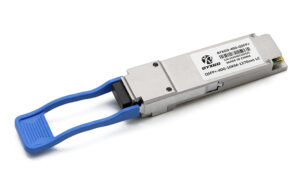
BYXGD-QSFP+-40G-10KM-1270nm-LC: The 40G QSFP+ module is specified for use over single-mode fiber to a distance of 10 kilometers. It is rated for consistent performance with a transmit power output of -5.0 to 2.3 dBm and a receiver sensitivity of ≤ -13.70 dBm. The module is equipped with a PIN photodiode and DFB laser to provide superb signal integrity with an extinction ratio of ≥ 4 dB. The module comes with LC interfaces commonly used in high-speed or long-distance applications.
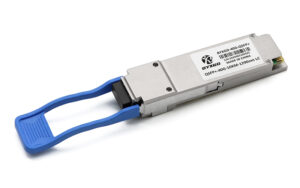
BYXGD-QSFP+-40G-10KM-1290nm-LC: This 40G QSFP+ module is intended for single-mode fiber connections and reliably transmits data over distances up to 10 kilometers. The specified transmit power is from -5 to 2.3 dBm and the receiver sensitivity is ≤ -13.7 dBm, which guarantees solid signal reception. A PIN photodiode and a DFB laser are used to keep the data as high-quality transmission requires an extinction ratio of more than 4 dB. The LC interface of the unit is consistent with other common equipment.
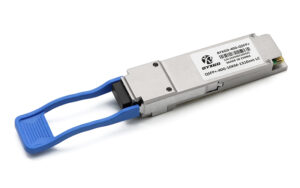
BYXGD-QSFP+-40G-10KM-1310nm-LC: The high-speed 40G QSFP+ optical module allows for 10 kilometers of data transmission using single-mode fiber. It works from -5 dBm to 2.3 dBm for transmit power and down to -13.7 dBm for receiver sensitivity to ensure reliability in the network. The model uses a PIN photodiode and a DFB laser, providing an extinction ratio greater than 4 dB. The LC interface creates a link in an enterprise or data center environment where there is distance and low signal loss.
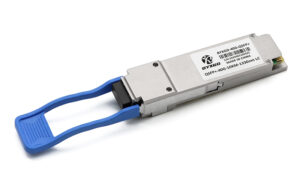
BYXGD-QSFP+-40G-10KM-1330nm-LC: This optimized-for-single-mode fiber 40G QSFP+ module provides data transmission over a distance of up to 10 kilometers. The module transmits power between -5 and 2.3 dBm, and the receiver is sensitive to -13.7 dBm, ensuring stability. The module’s DFB laser and the integrated PIN photodiode use a clean optical signal with a > 4 dB extinction ratio. With its LC interface, it fits into devices needing an efficient long-distance optical link.
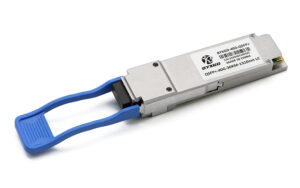
BYXGD-QSFP+-40G-30KM-1310nm-LC: This 40G QSFP+ module provides 30 km transmission using single-mode fiber at 1310 nm. It was designed to meet the designated requirements of the 40GBase-ER4 Lite applications. This model is equipped with a dual LC interface, has a QSFP+ form factor, and is an excellent option for stable, non-glitchy high-speed data transfer over long distances in enterprise and data center networks.
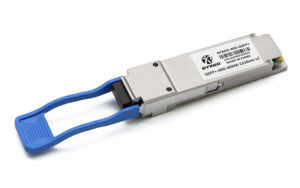
BYXGD-QSFP+-40G-40KM-1310nm-LC: This 40G QSFP+ module supports 40 kilometers of distance transmission over single-mode fiber at a 1310 nm wavelength. This QSFP+ module is suitable for 40GBase-ER4 applications. This is a dual LC input, QSFP+ style module that provides reliable long-distance high-speed connectivity for data centers and enterprise networks.

BYXGD-QSFP+-40G-2KM-1310nm-MPO/MTP: This 40G QSFP+ module enables single-mode fiber transmission at a 1310nm wavelength up to 2 km and is compatible with a QSFP+ form factor, MPO/MTP interface, and 40GBase-PLR4/PSM4 applications with a transmit power of -7 to 1.5 dBm and a receiver sensitivity of ≤ -13.7 dBm for consistent mid-range high-speed connectivity.
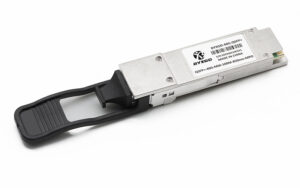
BYXGD-QSFP+-40G-MM-850nm-100M-MPO/MTP: This 40G QSFP+ module utilizes 850nm VCSEL laser sources to transmit over multimode fiber up to 100 m and it fits the QSFP+ form factor. The module supports applications for 40GBase-SR4 with an MPO/MTP interface. The transmit power ranges from -7.6 to -1 dBm and the receiver sensitivity is ≤ -9.5 dBm, which provides greater reliability in a short-reach high-speed connection.
40G QSFP+ Module Solution
| Product | Problem Solved | Description |
| 40GBASE-SR4 (qsfp-40g-sr4) | Short-range rack and adjacent rack connections | Supports up to 150 meters over multimode fiber, ideal for close-range data center cabling. |
| 40GBASE-LR4 (qsfp 40g lr4 s) | Long-distance campus and data center interconnects | Delivers reliable transmission beyond 10 kilometers over single-mode fiber for wide-area coverage. |
| 40G QSFP+ Breakout Cable (qsfp breakout cable) | Mixed 40G to 10G network deployments | Splits one 40G port into four 10G ports using DAC or AOC, facilitating flexible network topologies. |
| 40G BiDi (qsfp-40g-sr-bd) | Fiber-scarce environments requiring efficient fiber use | Enables bidirectional transmission on a single fiber strand, drastically reducing fiber infrastructure needs. |
Core Challenges & Solutions: Three Key Considerations for 40G QSFP+ Module Selection
When searching through the potential 40G QSFP+ choices that are available, how do you know which one may be the right module for your scenario? Knowing the critical considerations, including transmission distance, fiber type, and port density, will ease your angst and ensure you do not have confusion or incur an expensive error. This article will outline a few of those key considerations so you are informed and know your options when it comes to choosing a 40G QSFP+ module that will suit your needs and budget for your network. So, continue reading to help simplify and optimize your decision from potential confusion, and enable maximum performance for your network.
Consideration 1–Transmission Distance and Fiber Type: Optional SR4, LR4, PSM4 and ER4 modules
Transmission distance and fiber type are your first priority when selecting a 40G QSFP+ module. Certain modules will perform effectively at various distances and in different environmental applications. Knowing those limitations and distances is critical to a successful installation and ensuring the best network performance possible.
The SR4 modules (qsfp-40g-sr4) are also limited to short distances when used with multimode fiber (only deployed with SR4 transceivers for up to a max of 150 meters). The SR4 is an ideal use case for connecting switches to servers, to each other in a rack, or other switching proximity, like adjacent racks of the same top-of-rack switches. For example, if you have a multiservice rack (switch) 120 meters away (using multimode fiber), the 40GBASE-SR4 module will interface the switch and servers, and do it seamlessly, providing high-speed, short-distance connectivity while consuming very low power.
The LR4 modules (qsfp-40g-lr4) are indicated for performance over single-mode fiber. The LR4 typically connects two single-mode fiber ports over distances typically greater than 10 kilometers. The LR4 modules have also been found to have operationally effective applications on platforms such as external campus or data center-based campus networks using single-mode fiber.

Consideration 2–Selecting 40G Modules
If your network topology and design require a greater distance than approximately 10 kilometers, or if this is a campus application, or if there could be network location sites with distances over 10 kilometers to the client, then the 40GBASE-LR4 module should be considered for long single-mode fiber spanning distances while still providing reliability and speed.
If your application and topology require a small distance of approximately 2 kilometers, the PSM4 modules are a cheaper alternative using parallel single-mode fiber. The difference being, PSM4 uses several fibers in parallel and is able to offer a low price for mid-range links while also providing reliable and high-speed links even for limited data center interconnections.
If distance is the biggest consideration to support links that are longer for backbones or metropolitan topologies, then the ER4 module will suit your requirements. The ER4 module is intended for very long-reach applications–the ER4 module is designed for transmission lengths considerably beyond the 40 kilometers delivered on single-mode fiber links, which are important for capacity and ensure reliable extended network types.
To summarize, the two issues determining what type of 40G QSFP+ module is appropriate for your application are the type of fiber (multimode or single-mode) and the distance you need to transmit. You want to be sure you use SR4 for any short-distance multimode links; LR4 for single-mode links needing over 10 kilometers; PSM4 to provide you with a cheap option for mid-range link distances; and ER4 modules for the longest backbone distance links, to provide you with an efficient means to build a reliable performing network that meets your applications.
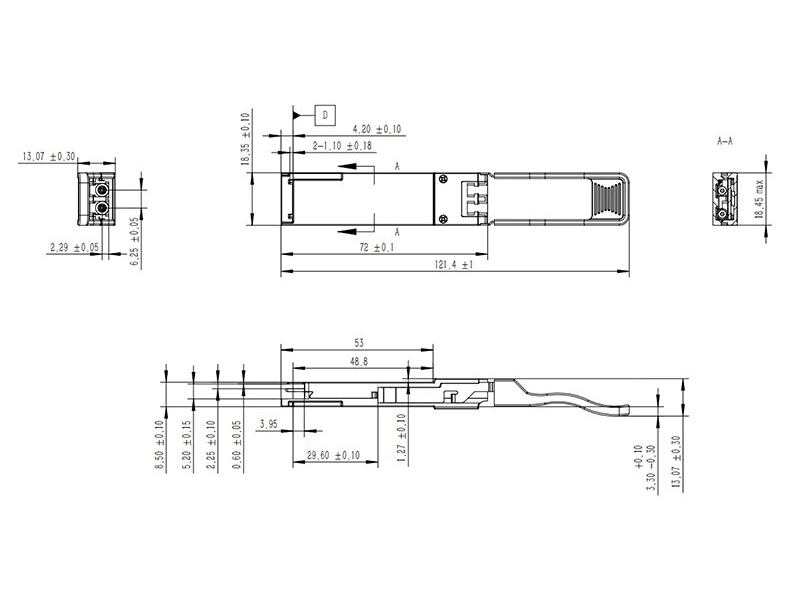
Consideration 3–Port Density & Link Optimization–From 40G to 10G with a QSFP+ Breakout Cable
In complex network environments, flexibility is at a premium and is very desirable. The decision to use QSFP-mated breakout cables allows for a single 40G QSFP+ port to be split into four 10G SFP+ connections, with the ability to interconnect devices with some flexibility in the speed of connections. This helps data centers or enterprises connect disparate devices, providing differing speeds of connected and deployed services, while also optimizing administrative resources.
The breakout cables also come in two formats: DAC (Direct Attach Copper) and AOC (Active Optical Cable). Breakout cables using DAC will allow for copper runs for short-reach connectivity while also providing a low-cost alternative for primarily intra-rack links. There are two breakout cable options that use AOC, which require optical fiber cabling providing comparatively longer runs with less signal loss, and improved resilience to electromagnetic interference compared to a copper option.
An efficient solution that will present significant opportunities for an administrator in a fiber-poor environment is the BiDi (qsfp-40g-sr-bd) module, which also has the ability to transmit and receive on a single optical fiber strand, using two wavelengths. The implementation of the BiDi modules can simply cut the fiber count in half, or otherwise defined as a significant reduction to your cabling configuration and costs. Through the use of BiDi modules, there will be much flexibility in interconnected links, where the fiber count is limited or deploying more fiber can be too costly.
An example is provided: at the same data center, you may have structured service interfacing with both 10G and 40G devices, multiplexing breakout cables, along with the introduction of BiDi modules, will rapidly downsize fiber infrastructure and costs, not to mention producing top throughput and low-latency specifications.
Both QSFP breakout cables and BiDi modules provide a flexible and fiber-efficient offering, which can provide mixed-speed equipment, along with the fit for an expanding need, ultimately leading to optimal port density and significant possibilities for efficiently scaling the network, while allowing the administrator to flexibly build a network to keep pace with reality.
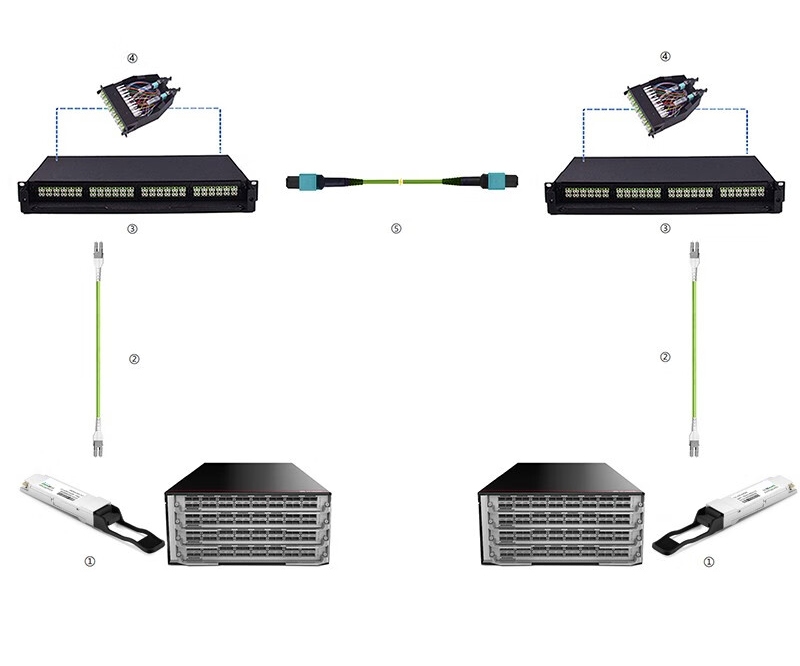
Compatibility & Cost Considerations for 40G QSFP+ Modules
When making the choice between OEM and third-party 40G QSFP+ modules, compatibility can be difficult. A significant aspect is the EEPROM chip and associated firmware assigned in the module, and how that comes into play with the device your module is installed on. If the EEPROM chip or firmware identified in the module is not consistent with the software of the firmware on the network equipment, it could lead to link failures and performance degradation.
During evaluation of suppliers, it is essential. Established suppliers provide authentic test reports that measure the veracity of the module’s association with all major switch brands (Cisco, Huawei, H3C). If the testing states the module has a compatibility certification against the manufacturer’s dataset, then there is a highly probable chance that it can operate plug-and-play without firmware mismatch or failure.
Furthermore, you could look to suppliers who will provide you with a lifetime warranty as well as adequate technical support. Long-term and continued support is paramount and will provide some assurance that if there is failure, it can quickly be resolved and instability minimized in return for any capital saved upfront by using lower-cost third-party modules or suppliers who cannot provide lasting technical support.
Furthermore, understanding optical power budget and equipment loss calculations is equally as important to rely on and troubleshoot the overall reliability of the network. The power budget simply equates to taking the optical power output of the transmitter and subtracting the receiver sensitivity, and then taking into account losses that can occur during transmission over long distances with fiber cables and connectors. If the total budget is insufficient, the quality of the signal will fall off the scale, leading to downtime, errors, and outages.
One enterprise managed to improve their overall link success rate to 95% by applying rigorous due diligence to the selection of suppliers and by electing to perform ongoing accurate power budget calculations. This organizational approach has not only mitigated downtime but optimized output to the highest efficient operational level to maintain productivity across their entire new and high-speed wireless network.
In saying that, balancing costs with compatibility and a higher level of due diligence can lead to risk. While there are many third-party suppliers offering their modules at lower costs, they require another level of validation. Quality OEM modules will bring peace of mind as you’re guaranteed a higher level of compatibility and support when your operational performance is critical.
FAQs
The main difference between QSFP+ modules and QSFP28 modules is that QSFP+ normally supports 40G Ethernet via four separate 10G lanes, while QSFP28 supports 100G Ethernet via four separate 25G lanes. The form factors are similar but have considerably different data rates, applications, and compatibility.
Generally, no! There are some physical similarities between the 40G QSFP+ and the 10G SFP+, but they operate under different protocols and use different signaling rates. Because of this, compatibility issues normally arise when trying to engage them together in any capacity.
Consult any vendor-supplied compatibility lists and check the specific firmware versions that enable the use of the module you have. Confirming these compatibilities helps circumvent any connectivity issues while also generating smooth operational results.
Check and clean the fiber connectors for dirt or damage. Check and ascertain that the module is compatible with the switch port. Review the switch logs to check for any error messages to help with diagnosis.
Contact Us For The Best Solution
40G QSFP+ modules provide highly effective performance, which gains the benefits of efficiency and cost savings, as well as the scalability required in data centers and enterprise networks. Choosing the solution that fits your network’s needs allows you to achieve the best possible speed, capacity, and reliability. Control the future growth of your network by looking into various suitable 40G QSFP+ solutions, or by speaking with one of our experts to form a custom upgrade plan.
Boost your network’s potential—connect with specialists and access cutting-edge 40G QSFP+ products now.
